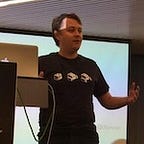How Cookie-Cutter Homes Teach Us to Write Better Scalable Software
Uniformity across all teams of the same project often looks like a good idea, but we can learn a few tricks from urban planning.
When discussing development in large teams, or more precisely, in projects where multiple teams need to coordinate towards a common goal, the dynamics of what works and what doesn’t change rapidly. It’s evident that what might work for a team of 10 or even 20 people likely won’t work for a team of 100 or more. Even when divided into smaller teams, if the dependencies and processes they are subjected to are too strong, they effectively become a much larger virtual team (I discussed this in a previous article).
In this article, I could address many topics because scaling is a big problem. Yet, I’ll focus on a single concept. And this concept can be better understood thanks to the learnings from Strong Towns, an urban planning organization. Because, despite my intuition and the fact that it’s written in software engineering manuals, I…
